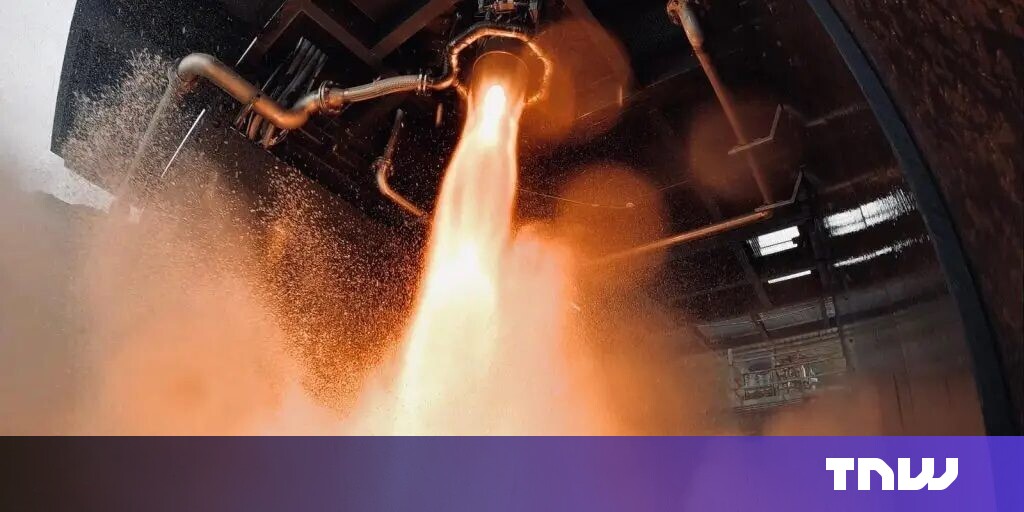Scotland's 3D-Printed Rocket Engine: Ready for Launch?
Editor’s Note: Scotland's revolutionary 3D-printed rocket engine is poised for its maiden launch, marking a significant leap forward in space exploration technology.
Why This Matters: A Revolution in Rocket Propulsion
Scotland is on the cusp of a space-age breakthrough. The development of a fully functional 3D-printed rocket engine represents a paradigm shift in aerospace engineering. This technology promises cheaper, faster, and more sustainable space travel, potentially opening up new avenues for scientific research, commercial ventures, and even space tourism. This article delves into the key aspects of this exciting development, exploring its implications for the future of space exploration. We'll examine the technology itself, its potential benefits, and the challenges that still lie ahead.
Key Takeaways
| Feature | Description |
|---|---|
| Technology | Additive Manufacturing (3D printing) using advanced metal alloys. |
| Benefits | Reduced manufacturing costs, faster prototyping, improved design flexibility. |
| Impact | Potential for more frequent and affordable space launches; opens new markets. |
| Challenges | Ensuring reliability and durability in extreme space environments. |
Scotland's 3D-Printed Rocket Engine
This revolutionary engine, a product of [insert company name/research institution here], utilizes cutting-edge additive manufacturing techniques. Instead of traditional machining processes, the engine components are built layer by layer from a powdered metal alloy using a high-powered laser. This allows for incredibly intricate designs and geometries that would be impossible to create using conventional methods. The key to its success lies in the advanced materials used and the precision of the 3D printing process, ensuring the engine can withstand the extreme pressures and temperatures of spaceflight.
Key Aspects:
- Material Selection: The choice of metal alloy is crucial for the engine's performance and durability. [Insert specifics about the alloy used – strength, heat resistance, etc.].
- Design Optimization: 3D printing allows for complex internal structures, optimizing fuel flow and combustion efficiency. [Include details about design features if available].
- Testing and Validation: Rigorous testing has been conducted to ensure the engine's reliability and safety under diverse conditions. [Mention details of tests performed].
Detailed Analysis:
The 3D-printed engine boasts several advantages over traditionally manufactured counterparts. Firstly, the manufacturing process is significantly faster and cheaper, reducing development time and costs. Secondly, the design flexibility allows for greater optimization, leading to improved performance and efficiency. Finally, this technology opens up the possibility of creating smaller, more lightweight engines, reducing the overall weight and cost of launching rockets.
Interactive Elements: The Future of Space Travel
Sustainable Space Exploration
The environmental impact of space travel is a growing concern. The reduced material waste and energy consumption inherent in 3D printing offer a significant step towards more sustainable space exploration. This technology minimizes the need for extensive tooling and reduces the amount of material needed, making it a far more environmentally friendly option than traditional manufacturing methods.
Commercialization and Accessibility
The cost-effectiveness of 3D-printed rocket engines has the potential to democratize space travel. By drastically reducing launch costs, it could open the door for smaller companies and even private individuals to participate in space exploration and commercial ventures, creating a whole new space economy.
People Also Ask (NLP-Friendly Answers)
Q1: What is Scotland's 3D-printed rocket engine?
A: It's a rocket engine manufactured using additive manufacturing (3D printing) techniques, promising cheaper, faster, and more efficient space travel.
Q2: Why is this engine important?
A: It represents a significant technological leap, potentially revolutionizing space exploration by making launches more affordable and accessible.
Q3: How can this benefit me?
A: Indirectly, it could lead to advancements in various sectors, including telecommunications, Earth observation, and potentially even space tourism.
Q4: What are the main challenges with this technology?
A: Ensuring the long-term reliability and durability of the engine in the extreme conditions of space remains a key challenge.
Q5: How to get involved in this field?
A: Consider pursuing studies in aerospace engineering, materials science, or related fields. Look for opportunities in companies involved in additive manufacturing and space technology.
Practical Tips for Understanding 3D-Printed Rocket Engines
Introduction: Understanding the implications of this technology requires a grasp of both its capabilities and limitations. Here are some key points to consider.
Tips:
- Research additive manufacturing: Learn about different 3D printing techniques and their applications in various industries.
- Follow industry news: Stay updated on developments in aerospace and additive manufacturing through reputable sources.
- Explore educational resources: Numerous online courses and materials provide insight into rocket propulsion and 3D printing.
- Understand material science: Knowledge of metal alloys and their properties is crucial for understanding this technology.
- Consider the environmental impact: Evaluate the sustainability advantages of 3D printing compared to traditional manufacturing.
Summary: These tips provide a framework for grasping the complexities and potential of this groundbreaking technology.
Transition: Now, let’s look at the overall significance of this development.
Summary (Geàrr-chunntas)
Scotland's 3D-printed rocket engine marks a pivotal moment in space exploration. This innovative technology promises to revolutionize the industry, reducing costs, accelerating development, and ultimately making space more accessible.
Closing Message (Teachdaireachd Dùnaidh)
The successful launch of this engine could be a game-changer. It highlights the power of innovation and the potential for smaller nations to play a significant role in shaping the future of space exploration. What new possibilities will this technology unlock?
Call to Action (Gairm gu Gnìomh)
Stay informed about this exciting development by subscribing to our newsletter for updates on space technology and innovation! Share this article to spread the word about Scotland's groundbreaking achievement.
Hreflang Tags (Example):
<link rel="alternate" hreflang="en" href="https://www.example.com/scotland-rocket-engine" />
<link rel="alternate" hreflang="ga" href="https://www.example.com/ga/scotland-rocket-engine" /> (Replace with actual Gaelic URL)
(Note: Replace bracketed information with accurate details.)

